|
|
|||||
|
|
|
|
|
||
|
|
|||||
|
|
|
|
|
||
Note: All pictures that follow are
"clickable". Clicking on them will show you an enlargement!
![]() CHECK
OUT THE USER'S MANUAL FOR THE PRO-FLASH !!
CHECK
OUT THE USER'S MANUAL FOR THE PRO-FLASH !!
![]()
![]() Be
sure to also check out the new "MINI-FLASH" Programmable LED Flasher/Sequencer !
Be
sure to also check out the new "MINI-FLASH" Programmable LED Flasher/Sequencer !
![]()
A lil' history ...
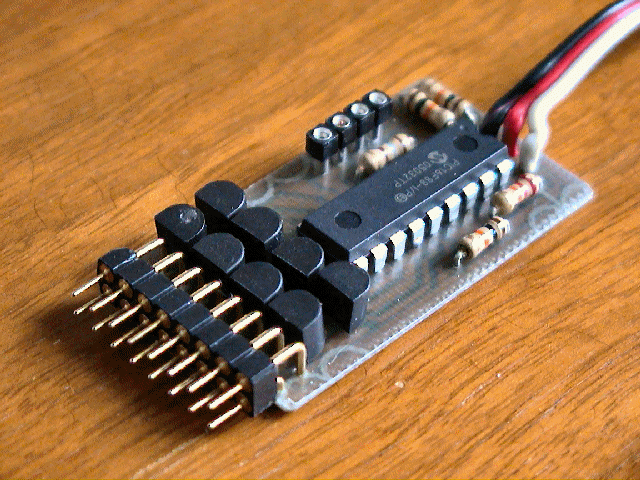 A while back when I was messing with Parallax Basic Stamps (i.e. programmable
microcontrollers), I often tinkered with the having microcontrollers perform
simple and mundane tasks such as having them flash lights (i.e. LEDs) in
certain sequences. My dad had many R/C boats and often thought about
outfitting one with a realistic, scale-like lighting system. One boat in
particular is a 4-1/2 foot long
Saito Destroyer
called the "DDK 16 Minegumo". This scale looking destroyer, with all
it's immaculate exterior detail, is actually powered by a real scale Saito Steam
Engine. Included is a custom propane burner, boiler, twin pistons and a
gear drive reduction that powers two 2" diameter brass screws. As with
almost all steam engines, this one also has a small steam whistle! This
was one of many steam-powered boats my dad had built years ago and when he
decided to sell them a few years back, this one in particular had to stay in the
family, hence, I now own it! Now all I had to do is design a
slick lighting system for it.
A while back when I was messing with Parallax Basic Stamps (i.e. programmable
microcontrollers), I often tinkered with the having microcontrollers perform
simple and mundane tasks such as having them flash lights (i.e. LEDs) in
certain sequences. My dad had many R/C boats and often thought about
outfitting one with a realistic, scale-like lighting system. One boat in
particular is a 4-1/2 foot long
Saito Destroyer
called the "DDK 16 Minegumo". This scale looking destroyer, with all
it's immaculate exterior detail, is actually powered by a real scale Saito Steam
Engine. Included is a custom propane burner, boiler, twin pistons and a
gear drive reduction that powers two 2" diameter brass screws. As with
almost all steam engines, this one also has a small steam whistle! This
was one of many steam-powered boats my dad had built years ago and when he
decided to sell them a few years back, this one in particular had to stay in the
family, hence, I now own it! Now all I had to do is design a
slick lighting system for it.
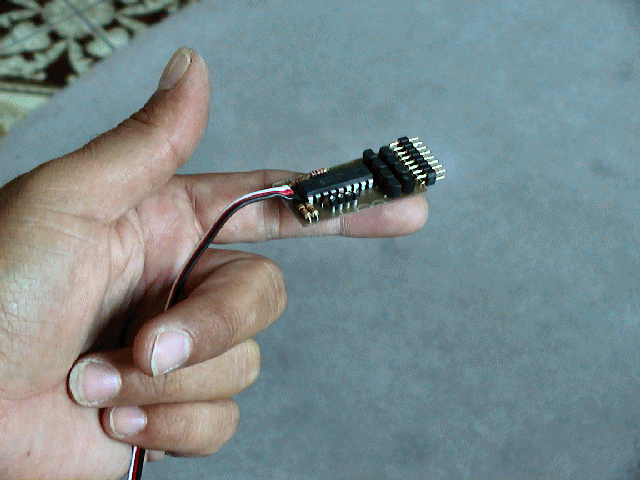 This project, called "Pro-Flash", is a programmable LED
Sequencer/Flasher that is based around the PICAXE 18X microcontroller.
This neat controller is programmable in a BASIC-like language very similar to
the "Basic Stamp" manufactured by Parallax Inc. The 18 pin PICAXE 18X provides 8 outputs and 5 inputs (3 of the inputs have
analogue capabilities). This project also includes the ability to
reprogram the LED sequencer using a PC-based (i.e. Windows) program that
includes a unique and intuitive Graphical User Interface. This program
also allows the user to "test" the LED sequence they develop by use of
software-based graphical representations of the 8 LED channels. The
sequence speed can also be programmed by the user. Each sequence contains
100 events and each of the 8 LED channels can be either ON or OFF for every
events. If the user wants to develop a sequence with fewer events, this
can also easily be programmed. As if these are not enough features, the
"Pro-Flash" also includes a control for each of the 8 channels that
allows the user to use an R/C servo output (from a R/C receiver) as a "switch"
control. This feature allows the user to control (active or inactive) each
of the 8 channels in regards to the position of the servo control input.
If the user uses a stick/slider as the servo input, the user will be able to
define one of 16 "Zone" settings for each LED channel. These zones are
based upon the servo position, that consisting of 4 unique "Zones". The
zones are 0->1/4, 1/4->1/2, 1/2->3/4, and 3/4 ->Full (with full being the full
deflection of the switch/slider). But how do you get to choose 1 of 16
zones? Well, you are also allowed to select one of the 16 possible
"binary" combinations of these zones. For instance, you could program a
LED channel to be active only when the stick is in the first zone (0->1/4) OR in
the forth zone (3/4->Full). This binary interpretation would be "1001".
All 16 zone combinations are available to the user. The servo pulse
position determines the binary "mask" applied to each LED's sequence set by the
user. A mask of "*-*-" (as selected in the programming software) would
mean the sequence would only be active when the servo is in zone 1 (0->1/4) or
in zone 3 (1/2->3/4). As another last example, a mask of "***-" would mean
the LED sequence would be active for zones 1 thru 3, except for zone 4
(3/4->Full). If the servo output used for the control is a toggle
switch instead of a variable slider/joystick, you would then obviously have only two zones (on or off, or, 0->1/4 and
3/4->Full).
This project, called "Pro-Flash", is a programmable LED
Sequencer/Flasher that is based around the PICAXE 18X microcontroller.
This neat controller is programmable in a BASIC-like language very similar to
the "Basic Stamp" manufactured by Parallax Inc. The 18 pin PICAXE 18X provides 8 outputs and 5 inputs (3 of the inputs have
analogue capabilities). This project also includes the ability to
reprogram the LED sequencer using a PC-based (i.e. Windows) program that
includes a unique and intuitive Graphical User Interface. This program
also allows the user to "test" the LED sequence they develop by use of
software-based graphical representations of the 8 LED channels. The
sequence speed can also be programmed by the user. Each sequence contains
100 events and each of the 8 LED channels can be either ON or OFF for every
events. If the user wants to develop a sequence with fewer events, this
can also easily be programmed. As if these are not enough features, the
"Pro-Flash" also includes a control for each of the 8 channels that
allows the user to use an R/C servo output (from a R/C receiver) as a "switch"
control. This feature allows the user to control (active or inactive) each
of the 8 channels in regards to the position of the servo control input.
If the user uses a stick/slider as the servo input, the user will be able to
define one of 16 "Zone" settings for each LED channel. These zones are
based upon the servo position, that consisting of 4 unique "Zones". The
zones are 0->1/4, 1/4->1/2, 1/2->3/4, and 3/4 ->Full (with full being the full
deflection of the switch/slider). But how do you get to choose 1 of 16
zones? Well, you are also allowed to select one of the 16 possible
"binary" combinations of these zones. For instance, you could program a
LED channel to be active only when the stick is in the first zone (0->1/4) OR in
the forth zone (3/4->Full). This binary interpretation would be "1001".
All 16 zone combinations are available to the user. The servo pulse
position determines the binary "mask" applied to each LED's sequence set by the
user. A mask of "*-*-" (as selected in the programming software) would
mean the sequence would only be active when the servo is in zone 1 (0->1/4) or
in zone 3 (1/2->3/4). As another last example, a mask of "***-" would mean
the LED sequence would be active for zones 1 thru 3, except for zone 4
(3/4->Full). If the servo output used for the control is a toggle
switch instead of a variable slider/joystick, you would then obviously have only two zones (on or off, or, 0->1/4 and
3/4->Full).
..more coming soon
SOME PROTOTYPE PICTURES !!
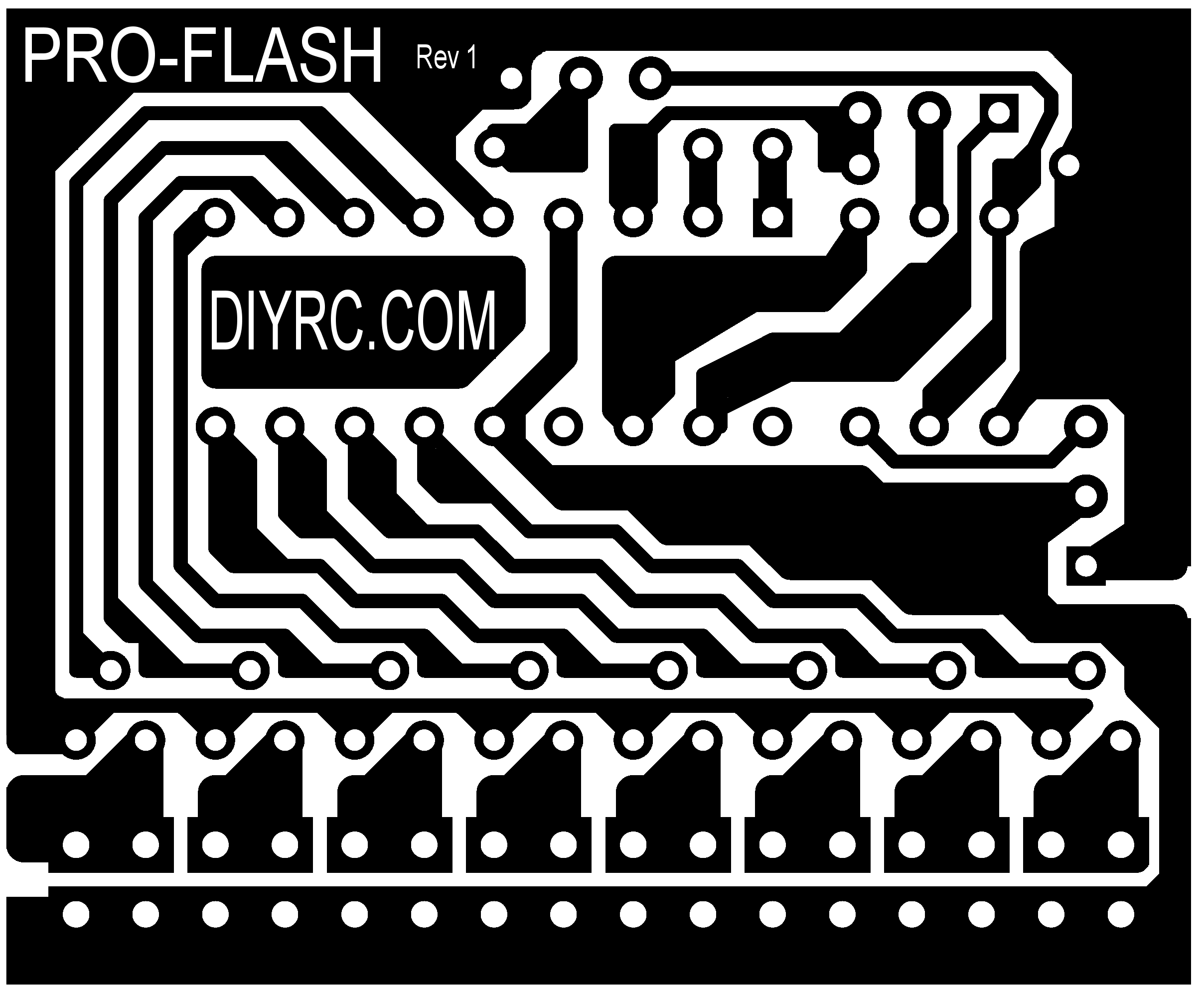
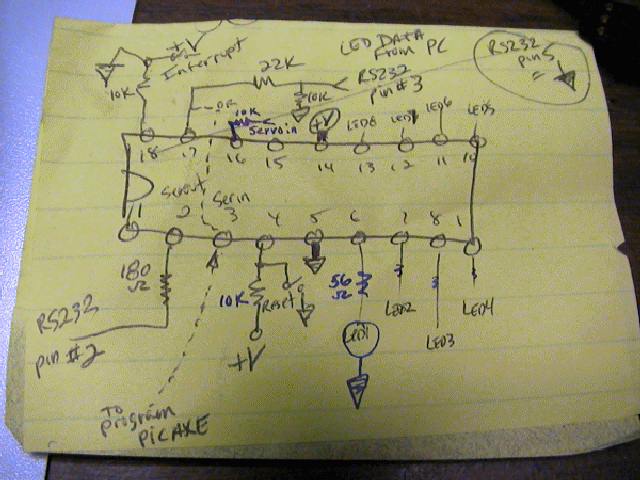
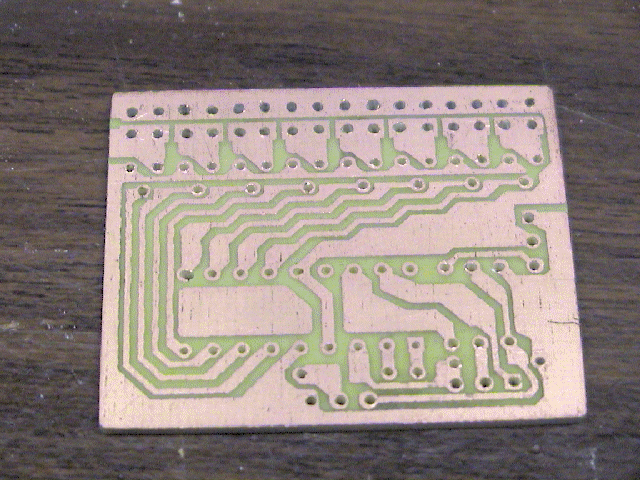
ORIGINAL, 8-CHANNEL PROTOTYPE VERSION !!
This PC design allows the user to
even program the PICAXE PIC (small DIP switch selects either LED Sequence
Download or PIC download). This design is an 8-channel LED
flasher/sequencer and has 16 outputs (2 each channel, side-by-side). This
is more of a development system for someone looking to write their own Picaxe
LED sequencer code.
SMALLER 4-CHANNEL VERSION !!
Below is a smaller version I made for a buddy of mine that use to use a Curtek system. This has 4 LED channels (other 4 can be soldered onto board after removing heat shrink but does not have output transistors). For each of the four channels, there are two connectors (side by each), for a total of 8 LEDs which can be connected.
This one shown below uses smaller, lighter .1" pitch pin header connectors.
FULL 8-CHANNEL - PRO-FLASH !! (Final Version !)
Below is yet another version just completed and tested. This final model includes 8 separate output transistors for each of the 8 LED channels. Although a little bigger (1" x 1.7"), the weight increase is minimal (+1 gram). This model also uses ultra-light machine pin header connectors shown in a few pictures below. This will most likely be the final production version due to its ultimate versatility. Also included by request are a few pictures of the completed LEDs with connectors. Unlike other navigation LED systems, these LED connectors allow you to swap/replace LEDs, that being upgrading to brighter LEDS or simply changing colors. This design also allows for easier installations. These LED leads are fabricated from 30+ gauge enamel-coated magnet wire I had lying around (twists per inch is around 8-10). Completed LEDs weigh roughly over a 1 gram each, due to the light wire and light machine pin headers used.
*Note 1: The SMD version is in the works!,... well, at
least the PCB. I will build a couple once I can get my hands on a few
SMD-version Picaxes! ... :)
Any one in the UK willing to snail-mail me a few for a few stipends?
Email me!
**Note 2: Unlike the original 8-channnel prototype version shown above, this version does not allow for the PIC to be reprogrammed since it has no input switch as in the original prototype. Defeating this feature made the board a bit easier to route and in fact, a bit smaller and lighter.
Some LED Calculator Links:
http://linear1.org/ckts/led.php (simple LED resistor calculator)
http://led.linear1.org/led.wiz (another LED calculator for multiple LED in series or parallel)
http://www.besthongkong.com/clrc.htm (a neat calculator hosted by a big LED distributor in Hong Kong)
Some Interesting Visual Basic coding information (Picaxe to/from PC serial port)
http://www.rentron.com/VisualBasic.htm (Reynolds Electronics)
Design Criteria Summary:
1) ...more coming soon

1) ...more coming soon
Building Instructions...
...more coming soon
THE PICAXE FIRMWARE FOR THIS PROJECT IS NOT FOR SALE ....
SORRY
Pre-programmed
Picaxe chips will be made available shortly....
Please email with any interests!
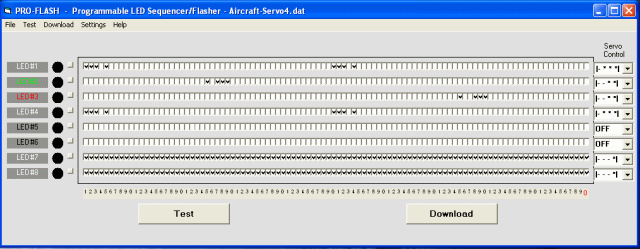
 DOWNLOAD
THE
DOWNLOAD
THE
PRO-FLASH
PROGRAMMING
SOFTWARE
!!! (beta2)
***
CLICK
HERE ***
Screen shots of the Pro-Flash programming
software.... pretty slick !
Testing and Operation Instructions...
1. TBD
2. TBD
TBD
TBD
**** VERY LIMITED
QUANTITIES ARE AVAILABLE ****
Please
email me regarding product
availability before sending money....
"PICAXE is a
trademark of Revolution Education Ltd (www.picaxe.co.uk)"